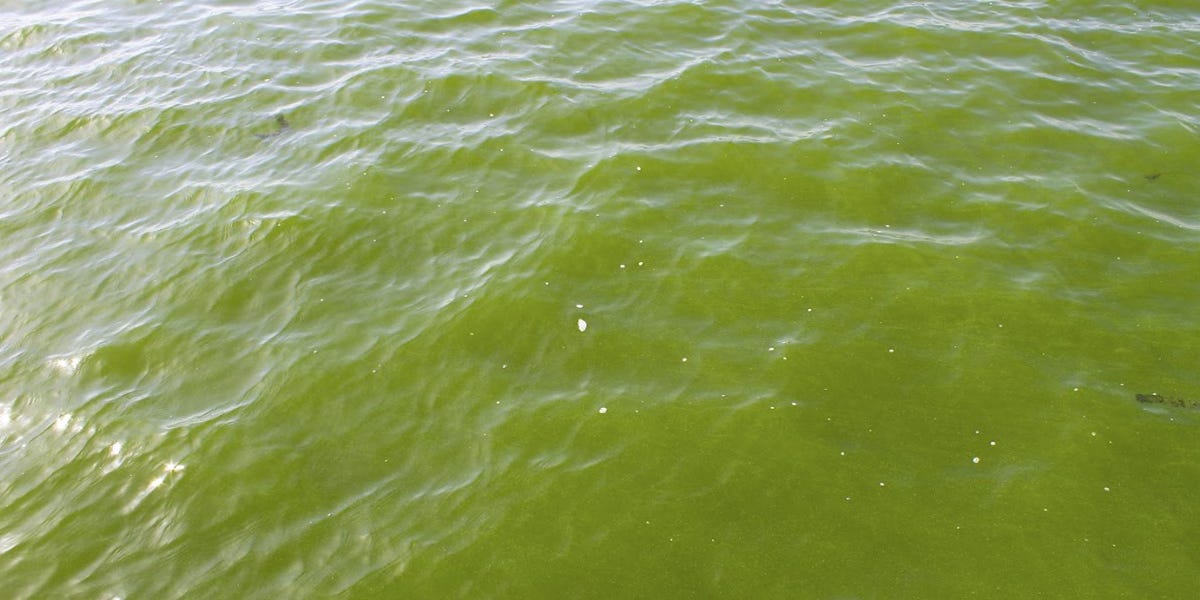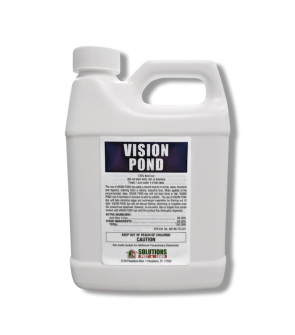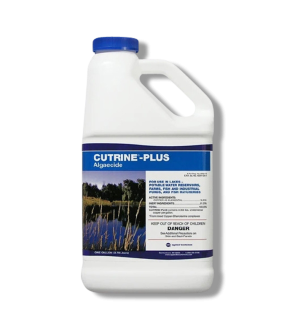Gain access to personalized product screening, the best pricing, rewards, and more!
Most Effective Products
Planktonic Algae Control: How To Get Rid of Planktonic Algae
Planktonic algae are floating microscope plants that are a normal inhabitant of sunlit surface waters. They are such an essential part of the aquatic ecosystem that it is pretty much inevitable that you will deal with this issue on your water property.
Planktonic Algae are microscopic and can become so plentiful in a body of water that they can turn the water from clear or blue to a yucky green pea soup color. Planktonic Algae can hinder recreational activities and can ugly up a pond or lake if left untreated for a long period of time. When planktonic algae makes the water look like that, who would want to swim in it?
If you have a problem with Planktonic Algae on your pond or lake, we can help. Our DIY guide below was put together by our experienced aquatic weed specialists and contains the best product recommendations and know-how for you to successfully remove this unsightly growth from your body of water.
Identification

There are three main types of algae: Pithophora, Planktonic, and Filamentous Algae. Planktonic Algae are so tiny that it's hard to make out their traits without a microscope. But because of the way Planktonic Algae colors the water green, you know when you have them. Planktonic Algae are free-floating and microscopic. They begin forming in the bottom of the water but then float near the surface where the sunlight helps them to go through photosynthesis, grow and multiply.
Wherever they are established, there are literally millions of floating Planktonic Algae, so much so that they color pond water into shades of green, blue-green, brown or variations in between due to the concentration. This occurrence is known as a "bloom" or "algae bloom". Many species of Planktonic Algae are involved in algae blooms and these species change over time based on temperature, light, nutrients, and other factors.
As unsightly as they appear, Planktonic Algae blooms are considered desirable as the beginning of the pond food chain and promote and attract fish populations that like to consume the algae. However, too much Planktonic Algae can cause oxygen depletions and kill fish as a result.
Use the following description and the corresponding image to help you to identify your algae as Planktonic Algae. If you need more help, contact us and we will help you to identify the algae you have.
Inspection

It is important to conduct careful inspection and analysis of the body of water that will be treated for aquatic weeds. Take into account the fishes and aquatic life that use the body of water as a habitat as well as the other vegetation in the water that is desirable and vital to the ecosystem before applying chemicals. Walk by your water body and observe the water to check for planktonic algae and to determine it's severity.
Where To Look
Planktonic Algae grows in pond water so you should observe your water body to see if you notice any change in the color of your water. Planktonic Algae floats freely in the top few feet of water of a pond or lake where the sunlight touches.
What to Look For
Planktonic Algae are best indicated by the color change of your pond water. If it is a faint green, you may have an average-sized infestation. If your water has turned heavily green, then Planktonic Algae has grown to an overwhelming size.
Treatment
Before handling any chemicals it is essential to first put on the proper PPE for safety(gloves, glasses, mask). Our top recommended products to treat algae is Cutrine Plus. This product has shown excellent results in killing Planktonic Algae and has a broad spectrum label so it can kill a large number of other unwanted aquatic weeds also.
Step 1 - Apply Cutrine Plus Algaecide

Cutrine Plus is a copper-based Algaecide and herbicide that is labeled to control Planktonic Algae. It is easy to mix and can be used as a surface spray to kill present algae. Before mixing, you will need to determine the size of the pond in acre-feet to see how much Cutrine Plus you need to apply.
The label contains a formula to follow to determine the acre-feet: (Length (ft.) x Width (ft.) x Average Depth (ft.) / 43,560 = Acre-feet). For typical algae applications, 1 gallon of Cutrine Plus can treat 1.5 acre-feet of water. So for example, if you have a 6-acre pond, you would need 4 gallons of Cutrine Plus.
Dilute the required amount of Cutrine with the right amount of water to ensure an even application is distributed. For small backpack sprayer applications, use a 9:1 dilution ratio (1 gallon of Cutrine Plus to 9 gallons of water) or a 50:1 dilution ratio when using water pump equipment or large tank sprayers.
The best time to apply is when temperatures are above 60 degrees Fahrenheit. Use a fan spray nozzle to ensure an even coating on the water surface.
Step 2 - Follow Up Application
If the pond is heavily infested with Planktonic Algae, it may be necessary to treat the pond or lake in sections and let each section decompose for about two weeks before treating another section. Aeration, particularly at night, for several days after treatment may help control the oxygen depletion. Algae reproduce rapidly, and it is common not to get season-long control with algaecides.
Prevention
After treating your pond for planktonic algae, we recommend applying Vision Pond Dye. Vision Pond Dye inhibits algae development by filtering out UV sunlight into the water and also gives your pond a clean blue color.
Measure the appropriate amount of Vision Pond Dye into a bucket based on your pond area measurement findings. The label recommends applying at a rate of 1 quart per 1 surface acre of water at a 5-foot average depth.
Pour the pond dye over the edge directly into the body of water and the water's natural movement will disperse the dye.
Key Takeaways
- Planktonic Algae are microscopic plant cells that can overtake a water body to the point that the color of the water is a greenish pigment.
- Applications of Cutrine Plus have proven to work best against algae and will kill growths quickly.
- Applying Vision Pond Dye works as a great preventative measure that hinders algae growth and improves the look of your pond.
- Combining periodic treatments of Cutrine with Vision Pond dye is your best bet to keep algae away and to maintain pond clarity.











